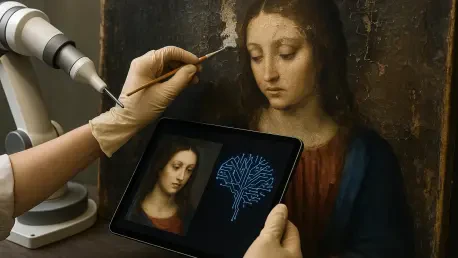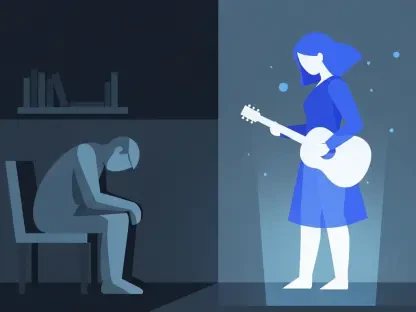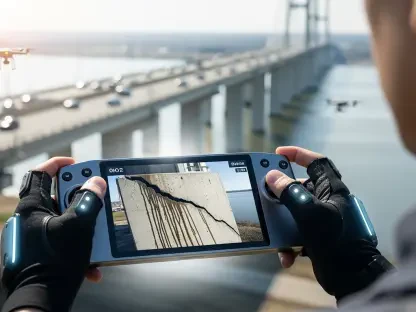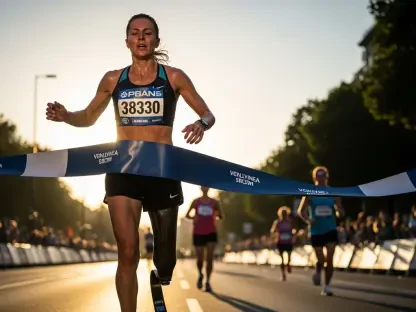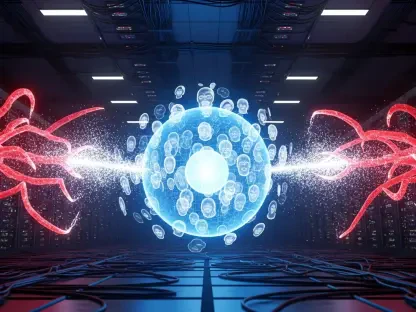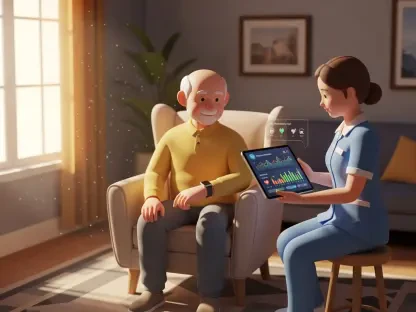As technology consistently redefines established fields, the art world is not left untouched, witnessing groundbreaking strides in art restoration. A notable development is the application of artificial intelligence (AI) to revolutionize how damaged paintings are restored, both digitally and physically. Pioneered by Alex Kachkine, a mechanical engineering graduate from MIT, this innovative method significantly speeds up the restoration process, preserving the essence and authenticity of an original artwork with remarkable precision. The core of this advancement lies in the use of AI-generated restoration masks, which offer unparalleled possibilities for preserving art history.
The Historical Challenges of Traditional Restoration
Precision and Time in Traditional Methods
Art restoration has always required a delicate balance of skill and artistry as conservators painstakingly apply color to innumerable regions in need of repair. The manual effort demands an acute sense of color matching and a deep comprehension of the artist’s original intent, making it an incredibly time-consuming task. Some restoration projects stretch over weeks, months, or even years, as experts tirelessly work to meld centuries-old techniques with modern principles of conservation. The precision and care necessary in this craft make it both a test of patience and a testament to human ability. However, the painstaking nature of this process has frequently sidelined works that could not commit to such an undertaking.
Digital Tools Enter the Scene
The introduction of digital tools presented a new dimension to art restoration, offering opportunities to quickly create virtual replicas of paintings using AI and computer vision algorithms. These digital models accurately reflect historical aesthetics and painting styles, but until recently, there was no efficient method to apply these digital restorations to the original physical works of art. Although digital replicates bridge a gap, an ever-present challenge remained in physically restoring a once vibrant artwork’s tangible essence. Kachkine’s method addresses this gap, promising both visual and material restoration simultaneously, paving the way for a new era in art conservation.
Alex Kachkine’s Innovative Restoration Method
Combining Digital and Physical Restoration
Kachkine’s method involves an ingenious integration of digital technology with physical restoration techniques, starting with the scanning of an artwork to identify faded or cracked paint areas. AI algorithms then create a virtual approximation of what the painting may have originally looked like, alongside specialized software designed by Kachkine to map the requisite colors and affected regions. This map becomes a blueprint for a physical mask composed of thin polymer films, printed with ink that matches the necessary color spectrum. The mask is meticulously aligned and affixed to the original painting, ensuring thousands of damaged spots are swiftly restored.
Flexibility and Historical Documentation
An essential feature of Kachkine’s technique is the reversibility and permanence of record-keeping it offers. The masks used in the restoration are crafted from materials that can be dissolved if future conservators need to revert the painting to its prior state. This aspect of temporal flexibility respects the shifting tides of conservation theory and artistic preference. The digital mask files also double as historical records, allowing art historians and conservators to study and understand alterations made over time. This dual capability not only preserves the art itself but also its conservation journey, offering insights into both artistic evolution and technological progress.
Ethical and Cultural Considerations
Balancing Innovation with Tradition
While Kachkine’s restoration approach is undoubtedly innovative, it necessitates careful consideration of ethical and cultural implications. Incorporating AI-driven methods into art restoration brings about questions of intervention and historical fidelity. There is a critical requirement for engagement with knowledgeable conservators who can ensure that any restoration aligns with an artist’s original style and intentions. Addressing questions like the permissible amount of intervention and aligning the restored work with conservation principles demands a close partnership between technologists and art historians.
Collaborative Efforts in Preservation
This partnership underscores the importance of collaboration within this transformative framework, emphasizing the need for a joint effort across disciplines. Art historians offer invaluable insights, ensuring the historical and cultural contexts are accurate and respected. By working together, technologists and scholars can effectively preserve art’s integrity while expanding access to historical artworks. The synergy emerging from this collaboration points to a future where art conservation combines sustainable practices with technological advancements without sacrificing authenticity or cultural significance.
The Impact on Art Conservation Practices
Future Prospects for Conservation
The development and implementation of AI-assisted restoration resonate profoundly through global art conservation practices. As museums and galleries manage vast collections, many of which consist of aging and damaged works, rapid restoration methods like those introduced by Kachkine could bring more artworks out of storage for public appreciation. By reducing restoration timelines drastically, the method holds potential to revolutionize how institutions prioritize and preserve collections, ensuring a greater variety of art remains accessible to audiences worldwide. Moreover, leveraging digital records of restoration interventions provides future conservation efforts with precise, documented changes, guiding subsequent restorations.
Addressing Current Limitations
The “align and restore” technique has already demonstrated its effectiveness with substantial results. Its trial on a 15th-century painting showed remarkable success, identifying thousands of repair-needing regions in mere hours—a stark contrast to the months of labor that traditional methods would require. This approach’s speed and scalability show the potential to handle extensively damaged artworks quickly and efficiently. As damaged artworks are no longer a liability but rather candidates for immediate restoration, such advancements explore a new horizon of possibilities born from Kachkine’s lifelong passion and academic endeavors.
A Transformative Step for Art Preservation
As technology continues to evolve and redefine traditional fields, the art world is also undergoing significant transformations, particularly in the realm of art restoration. A noteworthy advancement in this sphere is the incorporation of artificial intelligence (AI), which is revolutionizing the methods used to restore damaged paintings, both digitally and physically. This cutting-edge technique has been pioneered by Alex Kachkine, a mechanical engineering graduate from MIT, who has introduced an approach that greatly accelerates the restoration process. AI technology ensures the preservation of the original structure and authenticity of artworks with exceptional precision, utilizing AI-generated restoration masks. These masks provide unparalleled opportunities to maintain the integrity of art history, offering a modern solution to the age-old challenge of art conservation. As AI becomes more integral to the preservation process, it highlights how technology can harmonize with the artistic domain to uphold cultural heritage.
